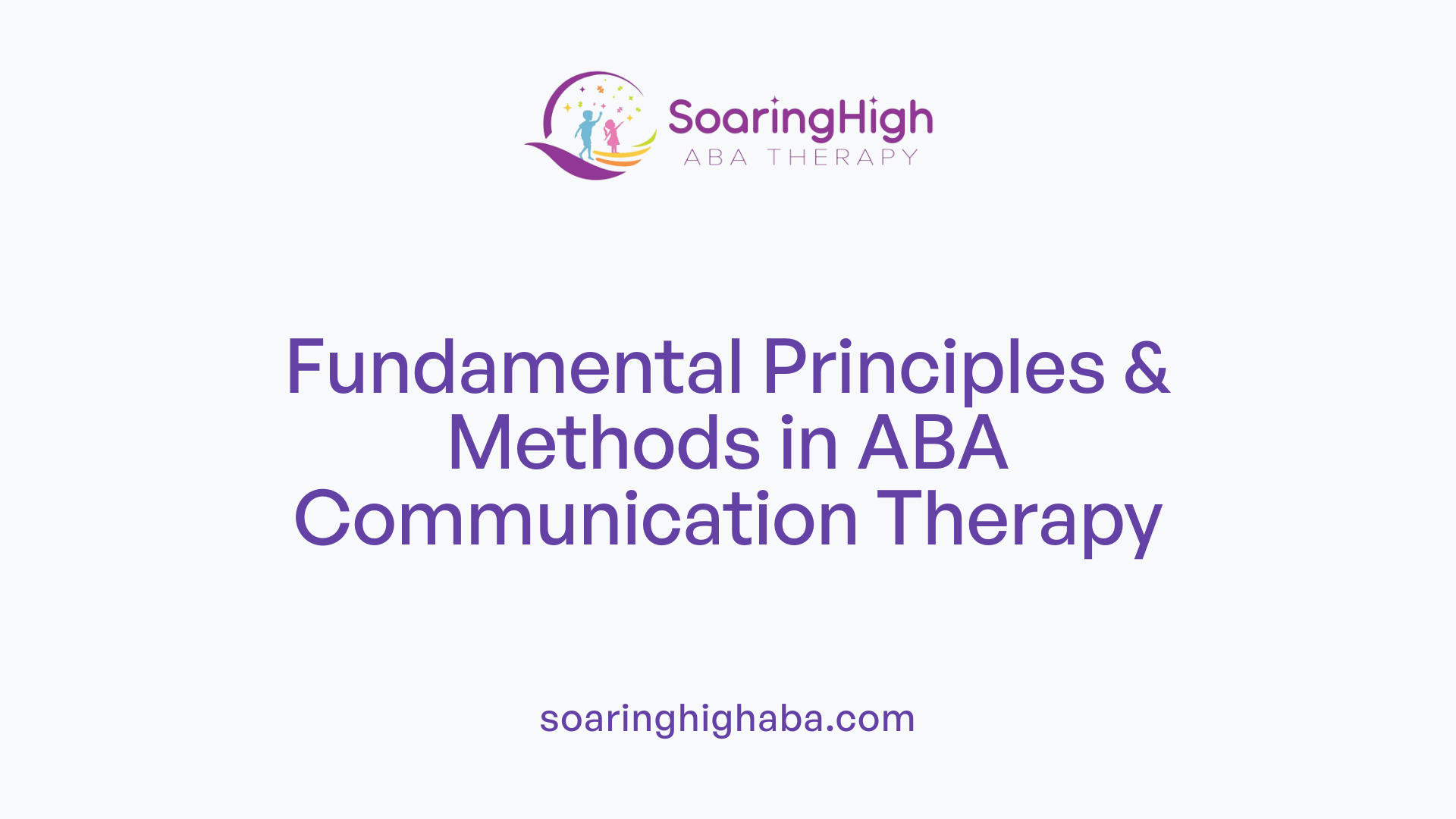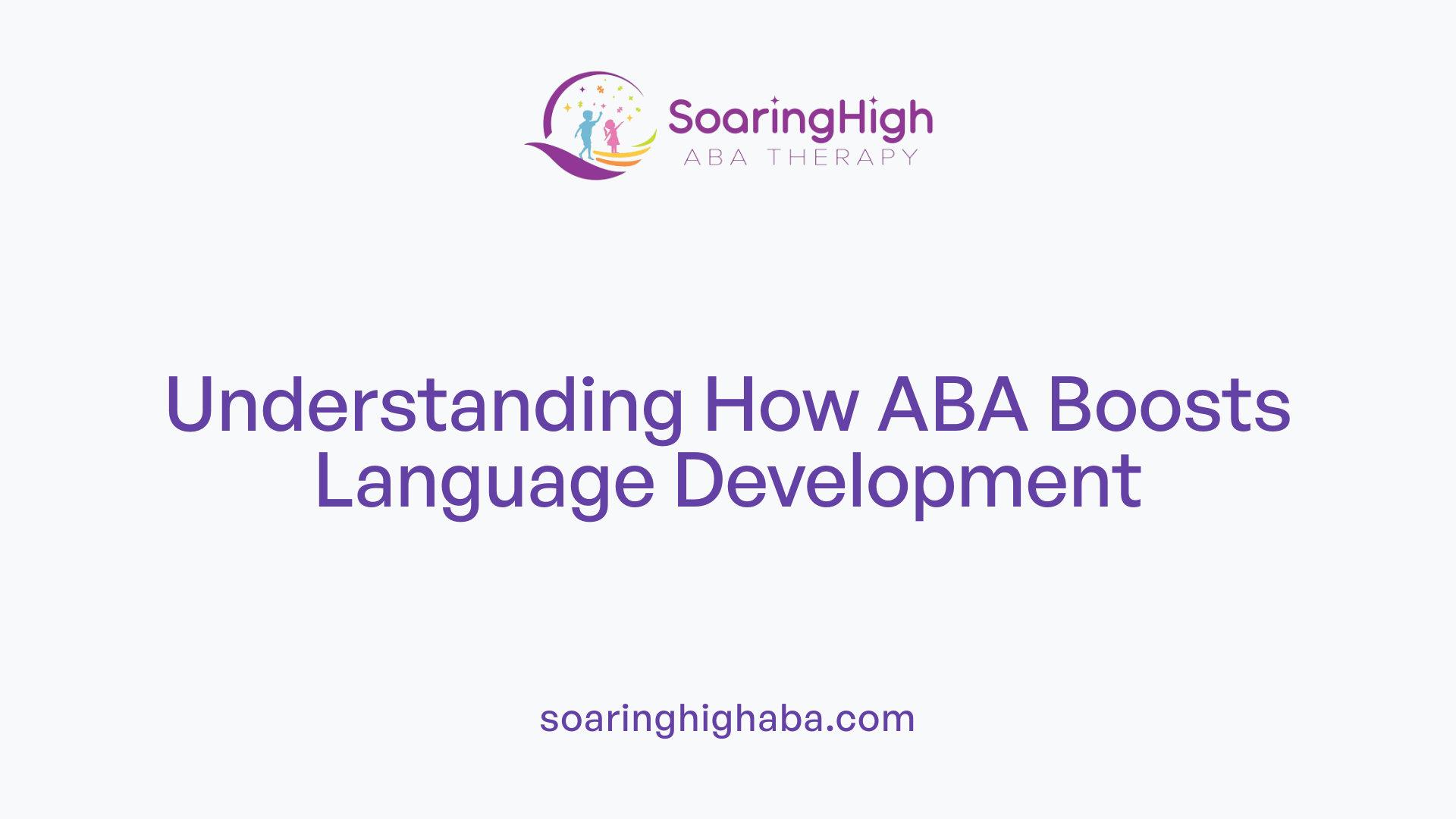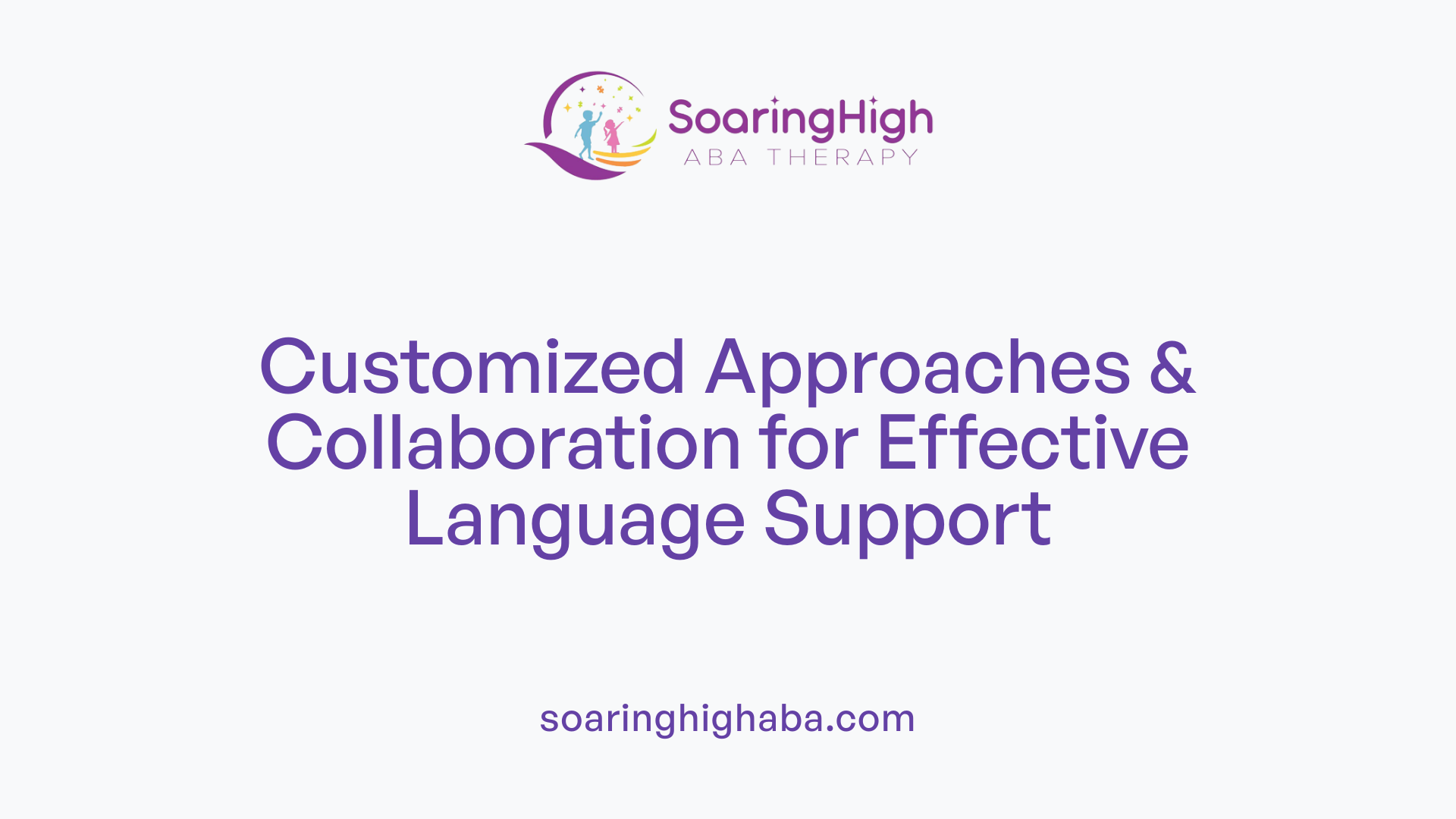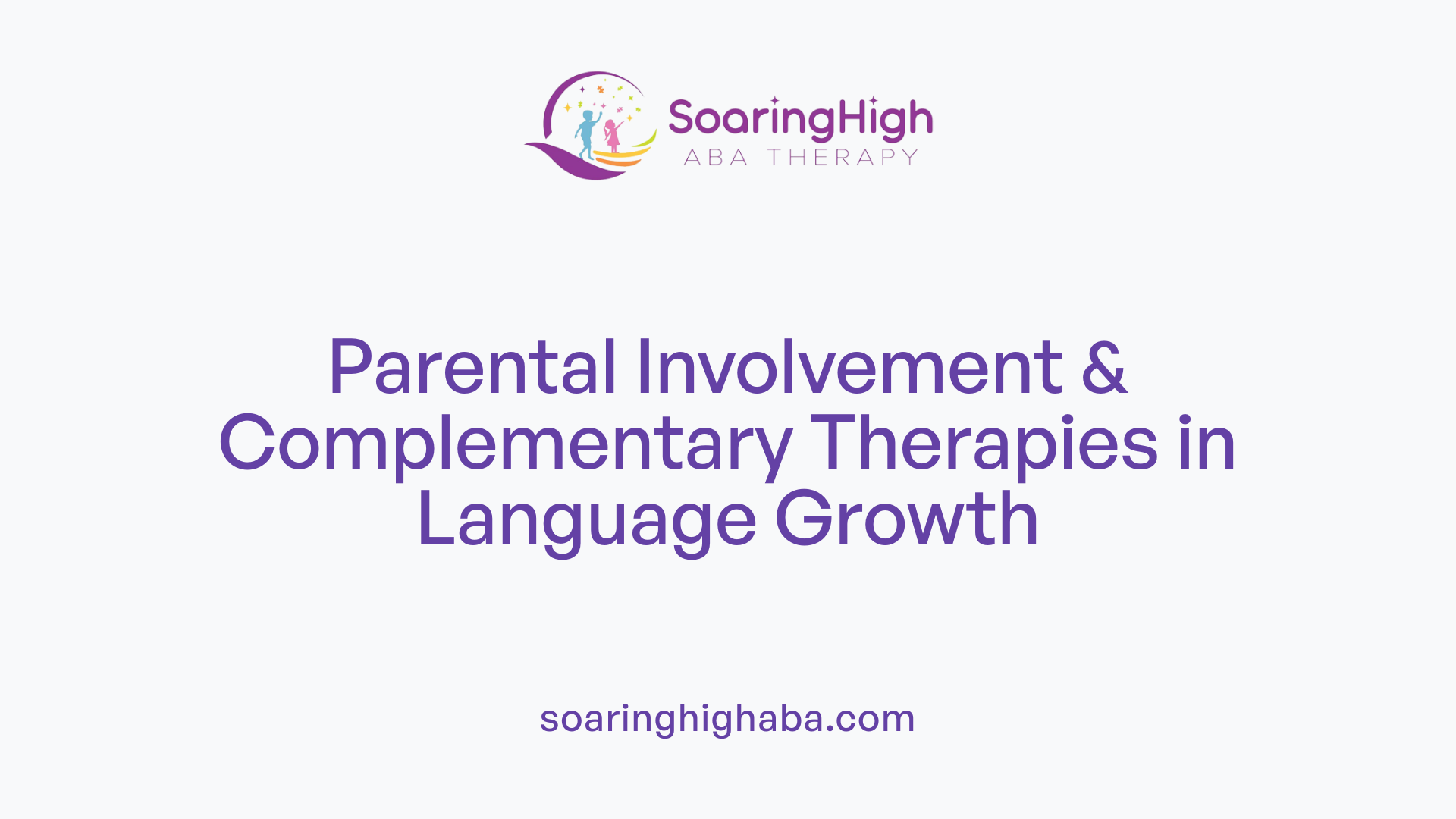Understanding How ABA Therapy Fosters Speech and Language Development
Applied Behavior Analysis (ABA) is a scientifically supported approach that significantly enhances speech and language skills in children with autism spectrum disorder (ASD). This article explores the principles, methods, benefits, and outcomes of ABA therapy, emphasizing its vital role in fostering effective communication and supporting long-term language development.
Core Principles and Techniques in ABA Therapy for Communication

What are the key principles and methods used in ABA therapy to support speech and communication?
Applied Behavior Analysis (ABA) therapy is built on foundational concepts that aim to improve communication skills in children with autism spectrum disorder (ASD). Central to this approach are positive reinforcement and prompting strategies. Therapists use positive reinforcement to reward language and communication efforts, increasing the likelihood that these behaviors will recur. This can include praise, preferred items, or activities that motivate the child.
Prompting, whether verbal, gestural, or physical, guides children toward desired behaviors, such as making eye contact, vocalizing, or requesting. Over time, prompts are gradually faded to promote independent communication, encouraging the child to perform behaviors without assistance.
Modeling and shaping are also integral. Therapists demonstrate appropriate communication behaviors and use reinforcement to shape the child's responses toward more complex and functional skills. Techniques such as Discrete Trial Training (DTT), Natural Environment Training (NET), and Verbal Behavior Therapy (VBT) offer structured methods to teach language skills. DTT involves repeated trials in a controlled setting, while NET emphasizes the generalization of skills across everyday environments.
Data collection is crucial to tailor interventions to each child's progress. Individualized programs are developed based on assessments of communication functions like requesting, commenting, or protesting. These programs incorporate visual supports such as picture exchange systems (PECS), communication boards, and augmentative and alternative communication (AAC) devices to facilitate both verbal and non-verbal communication.
A key aspect of ABA’s success in language development is the strategic fading of prompts, which helps children become more independent in using their communication skills. Additionally, ABA techniques prioritize generalization, teaching skills in diverse settings and situations to ensure practical and lasting improvements.
The collaboration with speech-language therapists within ABA frameworks enhances outcomes by addressing underlying speech delays or articulation issues through combined techniques like echoic training and modeling. This comprehensive approach supports children in developing functional, expressive language, ultimately leading to increased vocabulary, improved social interactions, and greater independence.
How ABA Therapy Benefits Language Acquisition
What are the benefits of ABA therapy for language acquisition in children with autism?
ABA therapy provides substantial support for developing language skills in children with autism. It employs proven techniques like positive reinforcement, modeling, prompting, and naturalistic teaching to enhance both spoken and non-verbal communication.
Therapists focus on individual goals, tailoring activities to each child's needs. They monitor progress regularly, adjusting strategies as necessary to maximize learning outcomes.
Early intervention is especially vital. Starting ABA therapy early helps build foundational skills in cognition and social interaction, which are crucial for language development.
Through structured activities such as mand training, echoic training, and natural environment teaching, children learn to use words and gestures more effectively. This includes expanding vocabulary, constructing sentences, and responding to questions.
ABA also encourages functional communication, replacing maladaptive behaviors with helpful alternatives. Children learn to express their needs and interests, which boosts their independence and social skills.
In addition to direct communication training, combining ABA with speech therapy and the use of augmentative and alternative communication (AAC) devices can further improve outcomes.
Overall, the therapy supports children in gaining the ability to connect, communicate, and engage with others, paving the way for more meaningful social interactions and greater independence.
| Aspect | Description | Additional Details |
|---|---|---|
| Techniques | Positive reinforcement, prompting, naturalistic teaching | Used to encourage verbal and non-verbal communication |
| Goals | Expand vocabulary, develop sentence structure, respond appropriately | Tailored to individual developmental needs |
| Methods | DTT, NET, modeling, shape therapy | Helps generalize skills across settings |
| Outcomes | Increased speech, functional communication, social skills | Enhances daily life and learning |
By focusing on these areas, ABA therapy plays a crucial role in supporting children with autism to achieve better language and communication skills, ultimately improving their quality of life.
Mechanisms by Which ABA Enhances Language Skills
 ABA therapy helps develop language and communication skills in children with autism by combining structured teaching methods with positive reinforcement. It begins with assessing the child's current skills and understanding the purpose behind their communication attempts, such as requesting, commenting, or protesting.
ABA therapy helps develop language and communication skills in children with autism by combining structured teaching methods with positive reinforcement. It begins with assessing the child's current skills and understanding the purpose behind their communication attempts, such as requesting, commenting, or protesting.
One of the core components is functional communication training, which teaches children to express their needs effectively. Therapists use behavioral techniques called operants—like mand (requesting), echoic (repeating sounds), and intraverbal (conversational responses)—to build a child's ability to communicate.
Naturalistic teaching opportunities are incorporated into daily routines and play to make learning more relevant. These include using real-life situations and natural settings to help children generalize communication skills across different environments.
Reinforcement plays a crucial role. When children make successful communication efforts, they are rewarded with praise, preferred items, or activities. This positive feedback encourages them to continue using words, gestures, or devices to express themselves.
Data collection is vital in ABA therapy. Therapists track progress meticulously, which allows for adjustments to be made to the treatment plan, ensuring that the strategies remain effective and targeted.
Building vocabulary and sentence structure is another focus. Therapists often work on expanding a child's word bank, combining words into sentences, and answering questions through techniques like natural environment teaching (NET). These activities promote not only vocabulary growth but also functional language use.
Additionally, when speech delays or articulation issues are present, ABA can support speech therapy by teaching imitation, shaping speech sounds, and modeling proper pronunciation. Parental involvement is encouraged, with caregivers being guided to model language, provide ample communication opportunities, and respond promptly to their child's attempts.
In summary, ABA therapy's combination of behavioral strategies, personalized assessments, and reinforcement techniques effectively promotes language development in children with autism. This approach supports their ability to communicate better, which leads to improved social interactions and independence.
The Use of Natural Environment Teaching and Other Methods to Generalize Skills
What are the methods used in ABA therapy to support speech and communication?
ABA therapy uses a variety of techniques tailored to help children develop their speech and language skills. Central to this approach are positive reinforcement, prompting, modeling, and shaping, which motivate children and teach them new communication behaviors. Specific methods like Discrete Trial Training (DTT) break down language into small, manageable steps, focusing on specific skills like requesting or labeling.
Another crucial method is Natural Environment Teaching (NET), which aims to teach skills in real-life settings where children naturally communicate. This approach encourages generalization, meaning children learn to use their skills across different environments and social situations.
Therapists collect detailed data during sessions to monitor progress and modify strategies accordingly. Visual supports such as picture exchange systems (PECS) and speech-generating devices help children with different communication abilities. Prompt fading, which gradually reduces assistance, encourages independence.
Combining ABA with speech therapy and augmentative and alternative communication (AAC) devices can further enhance language acquisition. These integrated strategies focus on making communication functional and spontaneous.
By systematically teaching communication in engaging, natural contexts and reinforcing successful attempts, ABA therapy effectively supports speech development, helping children with autism expand their vocabulary and use language more confidently.
Assessments, Personalization, and Collaboration in ABA for Language Development

Why is early intervention important for language development in autism, and how does ABA contribute?
Early intervention plays a vital role for children with autism because it allows for the timely teaching and support of essential communication skills during critical developmental years, usually between ages 2 and 5. Recognizing early signs such as difficulties in communicating, limited eye contact, or repetitive behaviors helps providers start targeted therapies sooner.
Applied Behavior Analysis (ABA) is a proven method that effectively supports language growth by teaching new skills using structured, positive reinforcement. It addresses speech delays, expands vocabulary, and fosters social and emotional development. ABA therapists carefully observe and document progress through detailed data collection, ensuring each child's treatment plan adapts to their evolving needs.
In addition to ABA, integrating speech-language therapy and utilizing augmentative and alternative communication (AAC) tools like communication boards or speech-generating devices can enhance outcomes. Technologies and tailored approaches keep children engaged and accelerate their journey toward independent communication.
By starting early, ABA interventions can lay a strong foundation for social interaction, peer relationships, and adaptive behaviors. This early support increases the likelihood of children gaining functional communication skills that are crucial for overall development and future success.
How are assessments used to tailor ABA therapy?
Initial assessments help identify the functions behind a child's communication attempts, whether requesting, protesting, commenting, or seeking attention. These evaluations enable therapists to develop personalized treatment plans that focus on the child's specific communication needs.
How do personalized plans and collaboration improve outcomes?
Tailoring treatment plans ensures therapy aligns with the child's unique strengths and challenges. Therapists incorporate techniques like mand training, echoic training, and intraverbal training based on what motivates the child.
Collaboration with speech-language therapists and parents enhances consistency and reinforces communication skills across different environments. Parents are encouraged to model language, respond promptly, and expand on their child's communication efforts, creating a supportive environment for learning.
How is progress monitored?
Therapists continuously track progress through data collection, measuring improvements in vocabulary, expressive and receptive language, and social interactions. This ongoing monitoring allows for adjustments in strategies and techniques to optimize development.
| Aspect | Method | Purpose |
|---|---|---|
| Initial assessments | Functional Communication Evaluation | Understand communication functions |
| Treatment personalization | Tailored goals | Address individual needs |
| Parental involvement | Training and modeling | Reinforce skills at home |
| Progress measurement | Data collection | Track improvement and adapt plans |
Final notes
Effective language development in children with autism relies on early, individualized, and collaborative strategies. Combining ABA with other therapies and continuous assessment creates a comprehensive approach that supports each child's growth toward meaningful communication and greater independence.
Outcome and Long-term Effectiveness of ABA for Language Development
 Research provides substantial evidence that ABA therapy effectively enhances language and communication skills in children with autism spectrum disorder (ASD). Numerous studies have shown significant improvements in both receptive and expressive language abilities, translating to better social interaction and increased independence.
Research provides substantial evidence that ABA therapy effectively enhances language and communication skills in children with autism spectrum disorder (ASD). Numerous studies have shown significant improvements in both receptive and expressive language abilities, translating to better social interaction and increased independence.
When assessing speech and language improvements, many research projects report positive outcomes, such as expanded vocabulary, better sentence construction, and more functional forms of communication. Techniques like mand training, echoic training, and natural environment teaching (NET) are routinely used to help children acquire and generalize these skills across different settings.
The long-term benefits of ABA are notable for their permanence and transferability. By applying strategies such as task analysis, prompting, and reinforcement, children can develop skills that persist over time. These techniques help children navigate various environments and social contexts, leading to greater overall development.
Ongoing progress tracking is crucial in ABA programs. Therapists regularly monitor each child's development, adjusting treatment plans as needed to maximize results. Using tools like data collection and functional behavior assessments, practitioners can tailor interventions, ensuring continuous improvement.
Studies indicate that the skills gained through ABA—such as larger vocabularies, improved social interactions, and independence—are maintained well beyond the therapy period. Children often carry these improvements into adolescence and adulthood, supporting their integration into daily life.
| Aspect | Description | Additional Details |
|---|---|---|
| Effectiveness | Consistently high | Studies show improvement in communication, social skills, and adaptive behavior |
| Techniques Used | Mand training, echoic training, prompting | Applied in natural environments for real-world relevance |
| Generalization | Achieved through methods like NET | Skills transfer across contexts and routines |
| Long-term Impact | Sustained improvements | Research highlights lasting gains in language and daily functioning |
| Progress Monitoring | Regular assessments | Data-driven adjustments to tailor individual programs |
Ultimately, while ABA therapy demonstrates proven short-term benefits, ongoing research continues to explore its long-term impact. High-quality, personalized programs provide children with valuable tools to communicate more effectively, promoting better quality of life.
For further information, searching 'Long-term outcomes of ABA in language acquisition' can yield detailed studies and reviews illuminating these sustained effects.
Parental Role and Integrating Other Therapies in Language Support
 Parents play a vital role in supporting their child's language development, especially when combined with ABA therapy. One of the most effective strategies is modeling language at home. By consistently using clear, simple words and phrases, parents help children understand and imitate communication. For example, describing daily activities or naming objects encourages children to expand their vocabulary.
Parents play a vital role in supporting their child's language development, especially when combined with ABA therapy. One of the most effective strategies is modeling language at home. By consistently using clear, simple words and phrases, parents help children understand and imitate communication. For example, describing daily activities or naming objects encourages children to expand their vocabulary.
Prompting responsive communication is another important technique. Parents can use verbal, gestural, or physical prompts to guide children toward using words or gestures to express their needs. As children begin to respond, prompts are gradually reduced, helping them become more independent communicators.
Incorporating augmentative and alternative communication (AAC) devices and technology can significantly enhance language skills, especially for children with speech delays. These tools, such as picture exchange systems (PECS), communication boards, or speech-generating devices, provide additional means for children to express themselves comfortably and effectively.
Collaboration with speech-language therapists is essential for maximizing outcomes. Therapists often work with families to develop strategies for consistent practice and to integrate techniques like echoic training and shaping at home. Sharing insights from therapy sessions helps maintain a cohesive approach that reinforces learning.
Supporting the generalization and maintenance of communication skills is crucial for long-term success. Parents are encouraged to create opportunities for their children to use new skills across various settings—at home, in preschool, or during community activities. Regular reinforcement, positive feedback, and ongoing practice ensure these skills become natural parts of their daily lives.
Research shows that early intervention during ages 2-5 is critical. When ABA is started promptly, it helps children develop essential social, emotional, and communication skills. Combining ABA with speech therapy and technology not only accelerates progress but also fosters independence. Early support lays a strong foundation for improved social interactions and long-term development.
The Impact of ABA-Based Interventions on Language and Social Skills
ABA therapy's individualized and evidence-based strategies make it a powerful intervention for supporting language development in children with autism. Its emphasis on reinforcement, naturalistic teaching, and caregiver involvement not only advances communication skills but also fosters independence and social engagement. As research continues to underscore its efficacy, ABA remains a cornerstone of early and ongoing intervention plans, promising meaningful improvements in the lives of children on the spectrum.
References
- Does ABA Therapy Help With Speech? Yes. Here's Why
- How ABA Therapy Supports Communication Skills - Perfect Pair ABA
- Applied Behavior Analysis (ABA) | Autism Speaks
- How ABA Therapy Supports Language Development
- Does ABA Therapy Help With Speech? Yes. Here's Why
- ABA Therapy vs Speech Therapy for ASD: Which is Better for My ...
- Resources - Blue ABA
- ABA Therapy





































































































